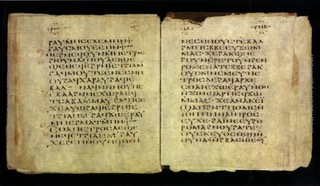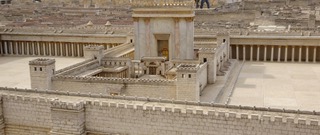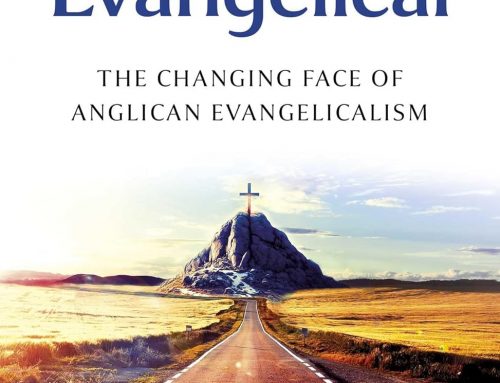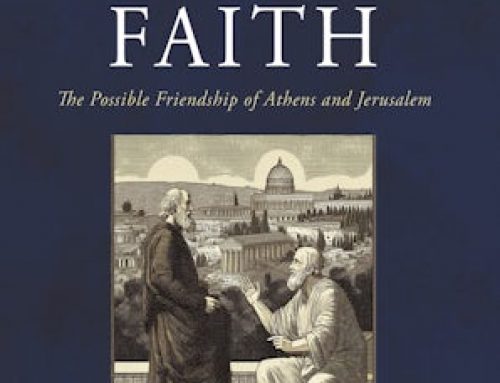A NEW WAY OF READING JOHN

Andy Roland is a retired Anglican vicar living in
Earls Court, London. He has published eight
books including ‘Bible in Brief’, ‘Jesus the
Troublemaker’ and ‘Daily Prayers from the World’s Faiths.
See: bibleinbrief.org and revandybooks.org
Summary
By disregarding the Bible’s divisions into chapters, we can recapture some of the impact that John in particular made on his first audiences. The shorter letters at the end of the New Testament may give a clue as to the natural length of a piece of writing in the early church, and how that might be used to re-read John.
Chapters
For the first 1200 years of the Christian church there were no chapter divisions to the Bible. When Stephen Langton, Archbishop of Canterbury, introduced chapters, he did the Church a great service, but also in some respects a disservice. Chapters are a great help in dividing large slabs so text into manageable portions. But they also influence the way that we read them.

Books and Parchments
If we write something for the outside world today, we may write a post, a blog, an article or a book. We use different forms for different types of information. The ancient world also had different writing technologies for different purposes. In 2 Timothy 4.13, Paul asks Timothy, “When you come, bring… the books and above all the parchments…”

Books were papyrus scrolls of published works. They were what you would get if you went to a bookseller in Rome. In 79 AD one wealthy house in Herculaneum had 1,800 papyrus scrolls. They could be up to 11 metres long, so could, for example, contain the Gospel of Matthew. They remained the main form of publishing literature for the next 200 years.

The Codex
But Paul clearly values his parchments more. These were a more informal writing material. They originated in a wooden tablet with a surface of wet clay as an instant form of writing. In the first century tablets of animal hide or papyrus took over. If you cut the hide or papyrus into page-sized sheets and bound them together, you have the ‘codex’, the ancestor of the modern book. Advantages compared with scrolls is that they were easier to carry, could be read without using both hands, you could write on both sides, and it was easy to flip pages over to check references. Lawyers used them as a help in court. You could jot down anything that interested you, and keep track of your accounts. If it was parchment, i.e. animal skin, pages could be washed, cleaned and re-used, useful in a notebook for jotting random things down. And a codex was about 25% cheaper to produce than a scroll.
By 100 AD the Roman poet Martial was extolling the virtue of this new book technology, and even published several books of epigrams using codices, not scrolls.
A Christian Innovation
The earliest piece of the New Testament, the Rylands fragment of part of John 19, 125 – 160 AD, is from a papyrus codex, written on both sides. It is probable that all Christian writings were in this form. Shorter books might have occupied just four sides. Is there any evidence? …

Yes. The Bible index shows fifteen short pieces of writing among the New Testament letters, ranging from 606 lines in Nestle’s Greek New Testament to just 40. Excluding the two longest (Ephesians and Galatians) and the three shortest (Titus, Jude and Philemon), we are left with ten short writings of strikingly consistent length. These range from 1 John (282 lines) to 2 Thessalonians (105 lines). The average number of lines for the ten short books is 195 lines. My guess is that a simple four- or eight-page codex would have been an ideal format.
From blog to book
The Gospel of John reads quite differently from the other gospels. The latter are basically an accumulation of short stories of a paragraph or two in length or a short collection of sayings. What academics call ‘pericopae’, and what Gen Z might call a ‘post’. John has lengthy passages which follow a line of argument, often starting with a miracle (or ‘sign’) followed by a theological response. It makes absolute sense to read them as independent units. Perhaps that is how John wrote them (or dictated them) originally. Each mini-book (tabellus or libellus in Latin) would be complete in itself. When they were collected into one large codex incorporating the earlier small ones, I would expect to see roughness in transitions. 
I like this idea because it is how I work. I often write blogs with a view to gathering them into a full-length book. They are all of a certain length, 1,500 – 2,000 words, because the medium and its audience demand a certain restraint; either that or I divided one blog into two.
John’s New Look
When I was a teenager, my best friend Mick and I once read out loud the entire letter to the Galatians in one sitting. It was a dramatic experience and we caught a sense of Paul as he actually was – passionate and sometimes over-passionate. If we want to get a sense of the writer and his work, we need to experience it as a whole.
So what happens if you read John one section at a time, ignoring chapters when appropriate? And most importantly, if read them properly, i.e. aloud. Silent reading was not discovered till around 380 AD by St Ambrose. You start to appreciate them as you would a piece of music. Themes occur and recur and you end with a felt rather than intellectual understanding.
One discovery was that different sections seemed to be addressed to different audiences. Here are some of the impressions that I came away with:
Chapters 1 – 3 (186) lines: A subtle and slow introduction to Jesus, a bit like a film with a famous actor in the lead part. In the opening scene you see just the back of his or her head so you don’t get distracted by previous memories. The key secondary person, the one who dominates the beginning and the end of the section is John the Baptist. Was it perhaps particularly directed to the followers of John the Baptist, who still existed when Paul was missionising in Greece (Acts 18.25)? Perhaps the story of the wine at the wedding in Cana was an indirect comment on John the Baptist taking no wine or strong drink (Luke 1.15).
Chapter 4.1-45 (83 lines): a one sheet document with the Samaritan mission in mind. 4.46-54 is a free-floating story, not linked to any explanation.
Chapter 5 (92 lines). A defence of Jesus’ healing on the sabbath. It ends with an appeal to the witness of Moses? What witness? Was it ‘You shall love the Lord your God and your neighbour was yourself’?
P.S. If you screen out the capital F and S for father and son, you have a simple parable of a son learning his trade just as Jesus learnt carpentry from Joseph.
Chapter 6 (100 lines): feeding the 5,000 and teaching on eucharist – or rather an attack on gnostic teaching. It read like a companion piece to the First Letter of John.
Chapters 7-8 (omitting 7.37-39 and 7.53-8.11, which were added in later); (120 lines): the Feast of Tabernacles; differences and disagreements among the Jewish leaders, Pharisees and people of Jerusalem over who Jesus is:
Chapters 9-10 (165 lines): healing of blind man, dispute with Pharisees.
Was this section a reaction to the Pharisees re-invention of Judaism after the fall of Jerusalem? Might the mention of the Feast of Dedication be a reflection of this?
Chapters 11-12 (223 lines). Bethany, entry to Jerusalem, final summary.
A coherent story from the raising of Lazarus to the triumphal entry to the feast at Bethany, and reaction of the Jewish leaders.
Chapters 13-14 + 18.1-27 (200 lines): the last supper; Jesus’ promises and his teachings in response to questions by three named disciples, followed by Jesus in Gethsemane, his arrest and first trial.

Model of the Temple, Israel Museum
Chapters 15 – 17 (176 lines): teaching after Last Supper about discipleship and persecution, and his prayer for his disciples, present and future.
Chapter 18.28 – 20.31 (204 lines): there is a sharp break at 18.28. Here we have Jesus’ witness before Pilate, his crucifixion and death, his resurrection and the gift of the Spirit. The Good News in one.
Chapter 21 (60 lines) Appendix: the second call of Simon Peter.
Conclusion
Dividing John’s gospel as above is not meant to be an academic exercise, though it does bring out some interesting themes. Rather, it is a call to read the gospel in a new way. By setting aside a few minutes to read aloud one of the sections above, within two weeks I believe we can have a new experience the Apostle John and his Lord.
Andy Rowland – July 2024





